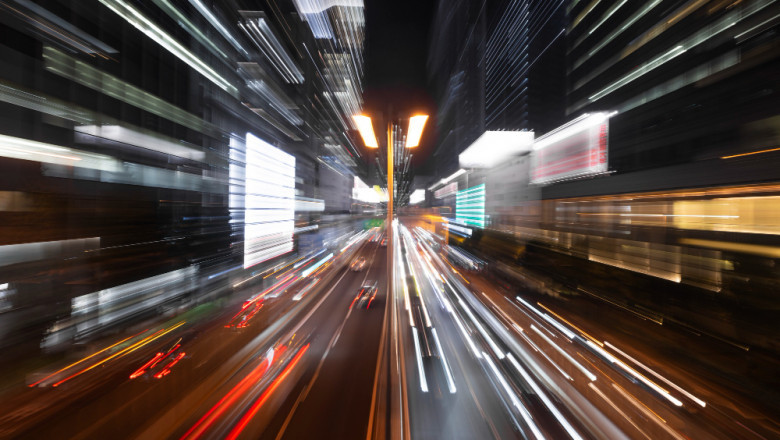views
In the evolving domain of urban mobility and intelligent transportation systems, the fusion of Speed Detection and traffic analytics has emerged as a game-changing force. As cities grapple with the challenges of congestion, road safety, and infrastructure planning, the ability to monitor vehicle behavior in real time has become more than a technological advantage—it’s a necessity.
Gone are the days when speed detection was limited to handheld radar guns or basic enforcement cameras. Today, advanced systems seamlessly integrate with traffic analytics platforms, enabling authorities and planners to gain a deeper, data-driven understanding of what’s happening on the roads. This integration not only enhances public safety but also improves the overall efficiency of transportation networks.
The Need for Accurate Speed Detection
Speeding remains one of the leading causes of road accidents worldwide. In high-density urban areas, where pedestrians, cyclists, and vehicles coexist in close quarters, even minor speed violations can lead to serious consequences. Traditional enforcement measures often fall short in providing consistent monitoring or capturing the context behind speed violations.
Modern speed detection systems are engineered to operate continuously and autonomously. Equipped with high-resolution cameras, radar sensors, and intelligent algorithms, these systems can track vehicle speeds with exceptional accuracy, even in challenging environmental conditions. Whether in low light, rain, or fog, the ability to detect speed reliably makes these systems invaluable for maintaining road discipline.
Merging Speed Detection with Traffic Analytics
While speed detection by itself is a vital function, its true potential is unlocked when combined with robust traffic analytics. This combination transforms raw speed data into actionable insights that benefit not just enforcement agencies, but also urban planners, traffic engineers, and policy makers.
When a vehicle is detected exceeding speed limits, analytics platforms can immediately determine the time, location, traffic density, vehicle type, and even patterns of repeat offenders. Over time, this aggregated data helps identify accident-prone zones, peak speeding hours, and areas where signage or road design might be contributing to risky behavior.
By applying machine learning to this data, traffic analytics systems can forecast potential hotspots and recommend preventive measures. This proactive approach marks a significant shift from the reactive models of the past.
Enhancing Road Safety Through Intelligence
One of the most impactful benefits of integrated speed detection and traffic analytics is its ability to enhance road safety. Instead of relying solely on random checks or sporadic patrolling, authorities can deploy resources strategically based on real-time insights. Speed enforcement becomes more targeted and efficient, ensuring that interventions are based on data rather than guesswork.
Moreover, by using real-time alerts and automated ticketing mechanisms, these systems create a strong deterrent against violations. Drivers are more likely to adhere to speed limits when they are aware that enforcement is continuous, unbiased, and technologically driven.
The presence of such systems also fosters a culture of safer driving. Over time, motorists become accustomed to speed compliance, especially in zones known for automated monitoring. This long-term behavioral change plays a crucial role in reducing accident rates and improving public confidence in road systems.
Supporting Urban Mobility Planning
Beyond enforcement, the data generated from speed detection systems contributes immensely to long-term mobility planning. Traffic analytics platforms analyze vehicle speeds across different routes and time intervals, offering a clear picture of traffic flow dynamics. Planners can identify bottlenecks, assess signal timing efficiency, and evaluate the impact of road closures or diversions.
For example, if a particular stretch consistently sees vehicles speeding during low-traffic hours, it might indicate that the speed limit is too conservative for current conditions. Conversely, areas with frequent speed violations during peak hours might need design interventions like speed calming measures or modified lane widths.
Additionally, this data helps evaluate the effectiveness of newly implemented traffic policies. Whether it’s the introduction of a new speed limit, redesign of intersections, or the creation of pedestrian-only zones, the impact can be measured accurately using historical and real-time speed data.
Environmental and Operational Benefits
The synergy of speed detection and traffic analytics isn’t just beneficial for safety and planning—it also contributes to environmental sustainability. When vehicles travel at consistent and regulated speeds, fuel consumption and emissions are significantly reduced. Frequent acceleration and braking, often a result of erratic driving or stop-and-go traffic, contribute heavily to air pollution in urban areas.
By promoting smooth traffic flow and discouraging speeding, these systems indirectly support cleaner air and reduced noise pollution. This aligns with the broader vision of smart cities, where technology enables greener and more livable urban environments.
On the operational side, integrated systems reduce the burden on law enforcement personnel. Automated processes ensure that violations are captured, documented, and processed without manual intervention. This not only improves accuracy but also ensures that human resources can be allocated to more critical tasks like emergency response and crime prevention.
Conclusion
The combination of Speed Detection and traffic analytics is much more than a technological upgrade—it is a strategic transformation in how cities manage mobility, safety, and sustainability. From reducing accidents and optimizing road use to informing future infrastructure development, this powerful integration is paving the way for smarter, safer, and more efficient urban living.
As the digital era reshapes transportation, embracing such intelligent systems is no longer optional. It is a vital investment in the well-being of both citizens and cities.













Comments
0 comment